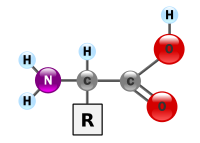
Evolution of bitter receptor genes and ontogenetic dietary shift in a frog
Sign Up to like & getrecommendations! Published in 2023 at "Proceedings of the National Academy of Sciences of the United States of America"
DOI: 10.1073/pnas.2218183120
Abstract: Vertebrate Tas2r taste receptors detect bitter compounds that are potentially poisonous. Previous studies found substantial variation in the number of Tas2r genes across vertebrates, with some frog species carrying the largest number. Peculiar among vertebrates,… read more here.
Keywords: ontogenetic dietary; genes ontogenetic; tas2r; dietary shift ... See more keywords

Testing for a dietary shift in the Early Cretaceous ceratopsian dinosaur Psittacosaurus lujiatunensis
Sign Up to like & getrecommendations! Published in 2021 at "Palaeontology"
DOI: 10.1111/pala.12529
Abstract: Many dinosaurs may have shown ecological differentiation between hatchlings and adults, possibly because of the great size differential. The basal ceratopsian Psittacosaurus lujiatunensis is known from thousands of specimens from the Lower Cretaceous of China… read more here.
Keywords: shift; dietary shift; testing dietary; psittacosaurus lujiatunensis ... See more keywords

Genomic signatures accompanying the dietary shift to phytophagy in polyphagan beetles
Sign Up to like & getrecommendations! Published in 2019 at "Genome Biology"
DOI: 10.1186/s13059-019-1704-5
Abstract: BackgroundThe diversity and evolutionary success of beetles (Coleoptera) are proposed to be related to the diversity of plants on which they feed. Indeed, the largest beetle suborder, Polyphaga, mostly includes plant eaters among its approximately… read more here.
Keywords: dietary shift; plant; hypothesis; gene ... See more keywords

Gut microbiota dynamics and functionality in Reticulitermes grassei after a 7-day dietary shift and ciprofloxacin treatment
Sign Up to like & getrecommendations! Published in 2018 at "PLoS ONE"
DOI: 10.1371/journal.pone.0209789
Abstract: Gut microbial structure in animals depends on the host, dietary habits and local environment. A random event, dietary change or antibiotic treatment may alter the gut environment with possible repercussions for the bacterial community composition… read more here.
Keywords: functionality; dietary shift; treatment; gut microbiota ... See more keywords

Comparative Transcriptomics and Methylomics Reveal Adaptive Responses of Digestive and Metabolic Genes to Dietary Shift in Giant and Red Pandas
Sign Up to like & getrecommendations! Published in 2022 at "Genes"
DOI: 10.3390/genes13081446
Abstract: Both the giant panda (Ailuropoda melanoleuca) and red panda (Ailurus fulgens) belong to the order Carnivora, but have changed their dietary habits to eating bamboo exclusively. The convergent evolution characteristics of their morphology, genome and… read more here.
Keywords: digestive metabolic; adaptive responses; dietary shift; two pandas ... See more keywords